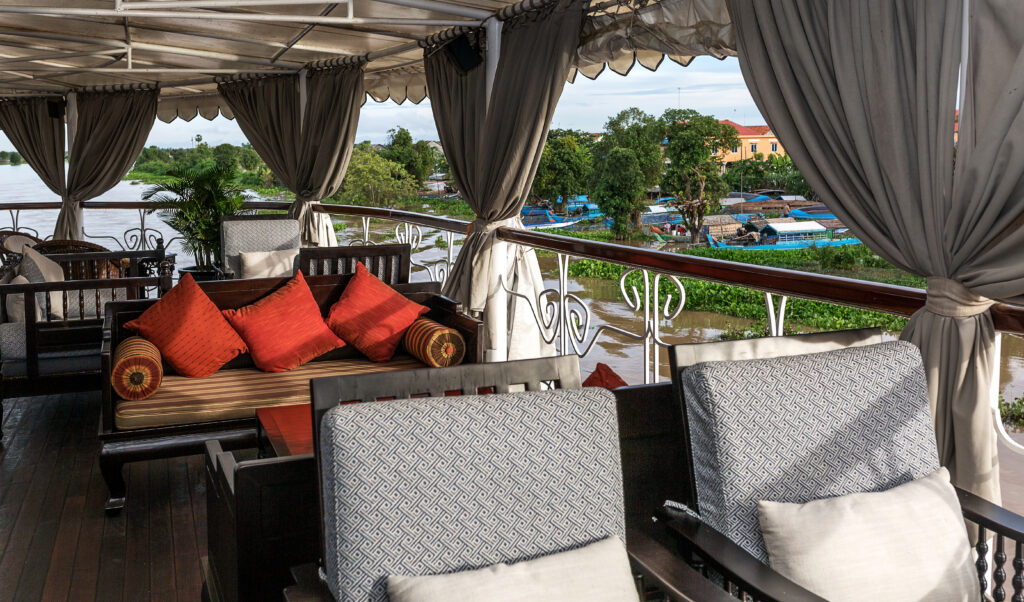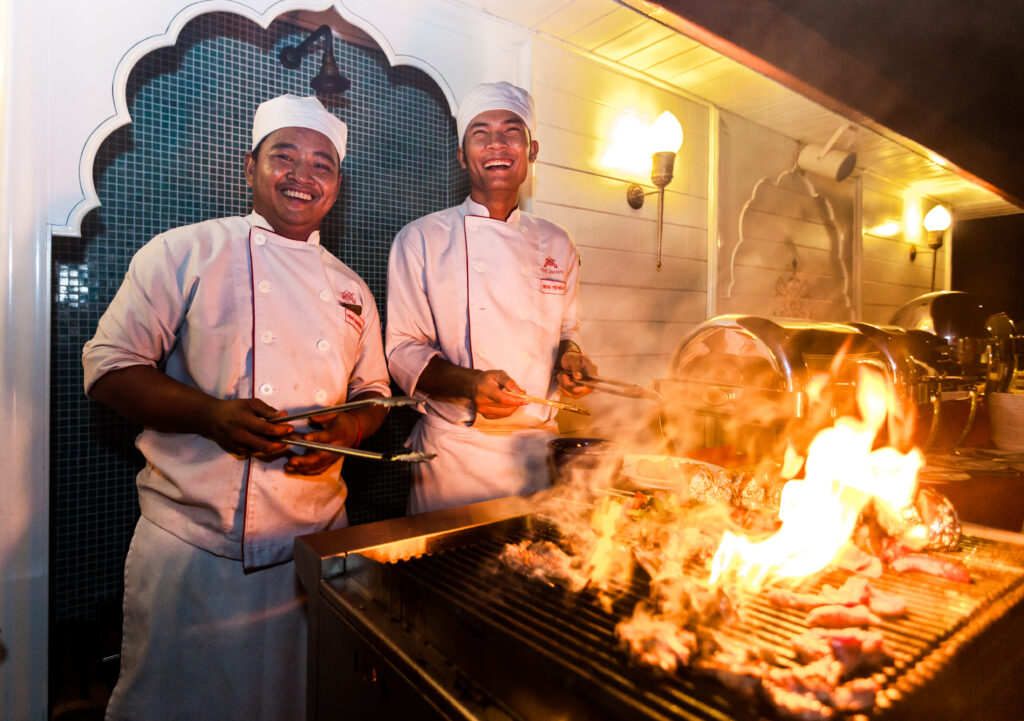

Jayavarman embodies all the serenity and harmony of its namesake Jayavarman VII who was one of the greatest Khmer rulers of all time, a forceful and benevolent sovereign, an art lover and devout Buddhist admired far and wide. The French say cherchez la femme. But in Jayavarman’s case it is more correct to seek two, not one woman.
The king married twice, first to Princess Jayaradhevi and then to her older sister Indradevi, and by all accounts they were extremely happy marriages to two very beautiful and deeply spiritual women.
At the beginning of Jayavarman’s reign, during his long and frequent absences to expand his kingdom, it was Indravedi who comforted the forlorn young queen with Buddhist teachings.Indradevi’s influence over the queen did not go unnoticed by Jayavarman who formed a strong attachment to his sister-in-law. And after Queen Jayaradhevi’s death this attachment blossomed into love, and finally into many long years as husband and wife.
Indradevi was highly cultured and played an active role in state affairs, something that was quite unusual for those days. She also taught in temple schools thanks to her command of Sanskrit and wrote many poems chronicling her husband’s achievements.
Jayavarman was a valiant leader during his 30-year reign and scenes of his successful naval battles can be admired today on engravings in the Angkorian Bayon and Banteay Chhmar temples.He was also a great builder. After the new capital Angkor Thom he went on to construct two of Cambodia’s most spectacular temples, Ta Prom and the official state Buddhist temple, the Bayon.
It is believed that the massive Buddha faces depicted on the four sides of the Bayon towers are of Jayavarman, and that the enigmatic smile on their faces – which is every bit as captivating as that of the Mona Lisa – is none other than the serene smile of the benign monarch.
These same smiles can be found on the faces of the friendly and hospitable Cambodians, and of the crew on board Jayavarman.

